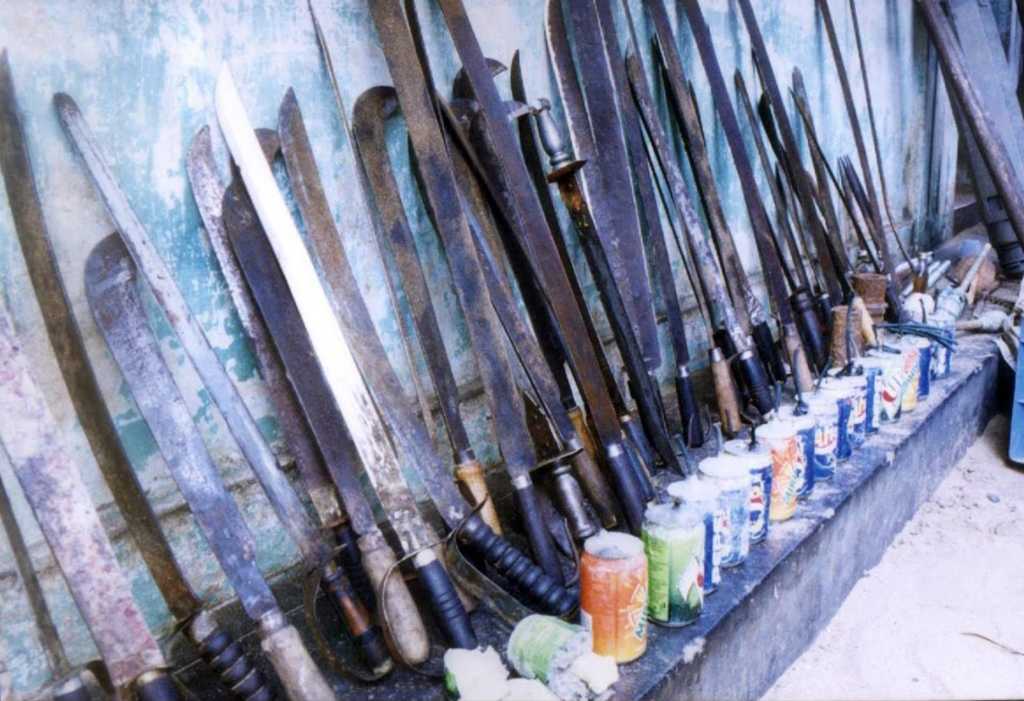In this series we are discussing instances of some of the most deadly religious riots and pogroms which are not seen as a threat to the “secular fabric” of the Nation and the rise of “intolerant” and the “fundamentalist” forces for the sole reason that they take place against the so called majority community whose rights are not recognized by those who are in control of powerful media houses and political outfits. Since, these riots are not as heavily publicized as some of the riots which have political utility the masses usually remain unaware about them.
In the previous segments ( Part I, Part II, Part III ) we have discussed large scale riots and pogroms which resulted in huge death tolls followed by media silence and political apathy. In this article we are going to discuss the Marad massacre of 2003 which though not as huge, but is an indicator of growing Islamic fundamentalism in the state of Kerala, apathy of the administration and the investigating authorities and the ruthlessness of the Islamic fundamentalists in the State. The focus of the article is not on the damage caused by the massacre but the anti Hindu mindset rooted in the communal elements of the State which unfortunately remains an untold truth.
Background of the Marad riots:
There was a sudden outbreak of violence in early 2002 which resulted in the death of five persons. It is believed to have been a Hindu-Muslim scrimmage but the life soon returned to normal and there was not any considerable violence in the region in the rest of that year. It is believed that this was not a sudden outbreak in violence but it was a well planned out act of violence by certain external elements.
The Massacre:
The marked feature of this riot was the local Jama Masjid which became the centre of the riots. After the attack, a sharp ten minute attack resulting in the killing of 8 Hindus even though the attackers had aimed for a far greater number of casualties and had hurled a number of bombs which did not explode, a huge cache of weapons including swords, knives and lethal bombs were found in the neighbouring Masjid suggesting that the intention of the intruders was not a quick ten minute attack resulting in few causalities but a dangerous conspiracy to carry out a mass massacre. The stock of bombs could not be utilized for their mischievous intentions by the attackers in the face of a police intrusion. After the attacks were carried out the attackers found refuge in the neighbouring Masjid which seems to have been the centre of conspiracy. Moreover, the process of law was abused even as hundreds of women converged around the mosque in a desperate attempt to protect the assailants who had committed a heinous crime.
Post riot investigations:
The Marad enquiry commission (Justice Thomas Commission) came to the conclusion that it was the Indian Union Muslim League which conspired and carried out the communal massacre. It also observed that fundamentalist organizations and terrorist organizations were involved in the massacre. The commission also made certain key observations regarding state apathy and opined that the State Police was at fault for being lethargic and negligent and suggested that a CBI investigation be made in the manner which was conveniently opposed by the then Chief Minister of Kerala A.K. Antony further evidencing the apathy of the State Government towards the victims and in fact towards a particular politically useless community. Finally 62 accused were sentenced with imprisonment for life in 2009.
Recent Developments: The new FIR, submitted before the Ernakulam chief judicial magistrate court, takes a cue from an earlier FIR filed by the Crime Branch and has named Indian Union Muslim League leaders P.P. Moideen Koya and Moyeen Haji; National Development Front activists, and Marad Mahallu Committee members. As per the new case, the accused allegedly funded, conspired and executed the riots.
Conclusion: The Marad massacre shows how places meant for religious worship can be used for the purpose of carrying out communal attacks and making a mockery of the law and order of the State. Most importantly it shows that when a particular community is at the receiving end the media is no longer interested in pursuing the matter to a reasonable conclusion. The fact that a mosque could be used for storing lethal weapons and endangering the public order of a particular region shows the lack of administrative will to deal with communal forces. The opposition to hold investigations under a Central Agency also show that the State Government is not interested in bringing justice and safeguarding the person and property of a community which does not boast of electoral significance.
